'Four Gold Cups, an unbelievable horse' - Aidan O'Brien recalls Ascot hero Yeats
The training legend, who turns 52 on Saturday, on his superstar stayer
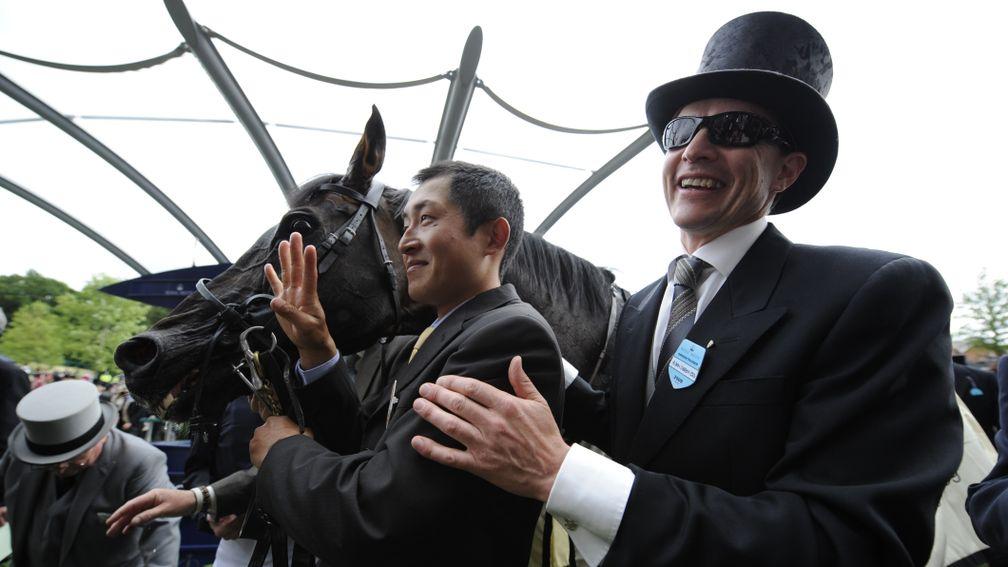
Aidan O'Brien, master trainer of Ballydoyle, turns 52 on Saturday. To celebrate the trainer's birthday, we have republished his interview with Alan Sweetman during which he discusses four-time Ascot Gold Cup winner Yeats. This article was originally published on May 27, 2021.
On April 23, 2001 a son of Sadler's Wells was foaled at David and Diane Nagle's Barronstown Stud, near the County Wicklow village of Grangecon.
The time and place of birth of Yeats, one of the greatest stayers in racing history and the horse whose record of winning the Gold Cup at Ascot on four occasions Stradivarius will try to equal next month, is more than a preliminary footnote to an epic career. His trainer Aidan O'Brien believes that the ties of family friendship between the Nagles and John and Sue Magnier of Coolmore Stud exercised a crucial influence on the career path he ultimately took.
O'Brien says: "When you look back, you can see there could have been a temptation to retire Yeats at various times. But he always meant so much to the Magnier and Nagle families. They got so much fun out of him. They wanted to keep him going as long as possible."
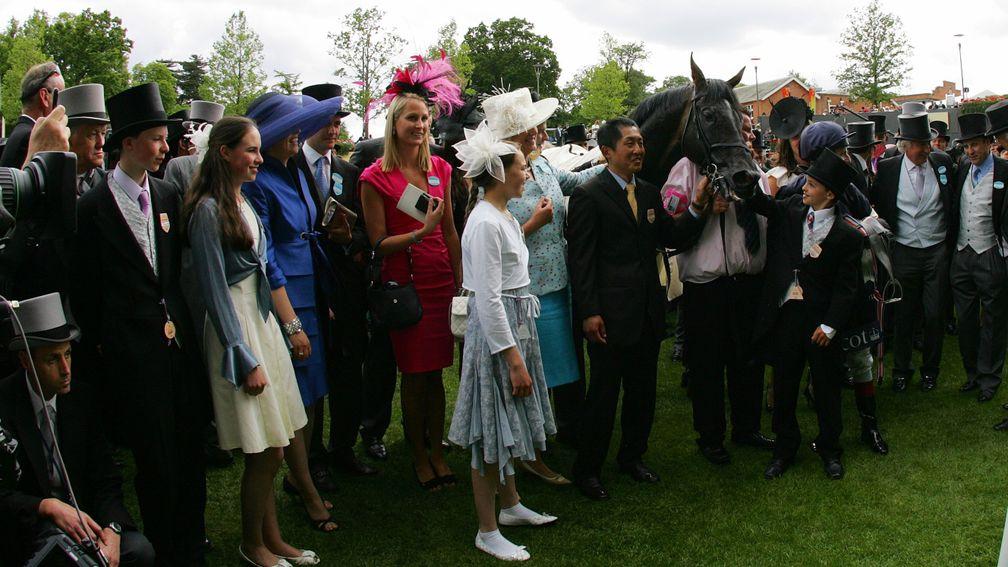
At the outset, ambitions were pitched in one direction only, the backdrop provided seven days before his birth, when the Sadler's Wells colt Galileo won the Ballysax Stakes at Leopardstown. The following month he returned to the Dublin track to win the Derrinstown Stud Derby Trial. In June he became O'Brien's first Derby winner.
In 2002 High Chaparral, another Sadler's Wells colt, emulated Galileo by winning the Ballysax, the Derrinstown, the Derby and the Irish Derby.
O'Brien had been training at Ballydoyle for the Magnier family and the Coolmore Stud partners for only half a dozen years. Yet a template had already been established by the time Yeats made a winning debut under Mick Kinane in a two-year-old maiden at the Curragh in September 2003.
O'Brien invoked Galileo's name in his post-race remarks, saying: "This colt is a beauty. He's been a proper horse all the way at home. It was always going to be the same as Galileo with this fellow – one run and then put him away until next season. If we get him through the winter okay then we'll go the Galileo route with him early next season."
Almost two decades later, O'Brien recalls his early impressions of Yeats.
"He was a typical high-class son of Sadler's Wells, a big, raw colt, clear-winded, light-framed," he says. "I was very happy with him close to his first run. I told Michael not to be afraid to commit him early enough. He was definitely going to stay the mile, and it was important to educate him because the plan was always just one run at two."
Bookmakers acted on the trainer's hints, installing Yeats as 16-1 favourite for the Derby, although he was displaced in most lists when American Post, trained by Criquette Head, won the Racing Post Trophy.
Aidan O'Brien: 'Drug talk must stop – don't tear apart the sport with no facts' (Members' Club)
The Racing Post's senior form analyst Graham Dench provided words of caution in an end-of-year assessment of the once-raced Yeats. He wrote: "The expectations of him at three are totally disproportionate to his achievement at two, and there is a danger that he might be one of those unfortunates who unfairly ends up being labelled an underachiever, despite improving two stone or more. Let's hope not."
The 2004 season was attended with difficulty for O'Brien, who suffered an early reverse when the much-vaunted One Cool Cat, winner of the Phoenix Stakes and National Stakes, was tailed off under new stable jockey Jamie Spencer in the 2,000 Guineas.
As the trainer had promised, Yeats started off in the Ballysax Stakes, an inconsequential three-runner affair in which he made all and cruised home ten lengths clear of Dabiroun, later to earn a minor claim to fame by winning the inaugural Fred Winter Juvenile Handicap Hurdle at the 2005 Cheltenham Festival.
Yeats was a 1-5 chance against three rivals in the Derrinstown and again made all. However, he was not overly impressive in coming home a length and a half ahead of the Dermot Weld-trained Relaxed Gesture.
O'Brien remains a big fan of the key Leopardstown trials, brought into focus again this year by his Galileo colt Bolshoi Ballet, who will bid to revive his original formula for Epsom success after a 19-year intermission.
He says: "I've always liked the two Leopardstown races, they're ideally spaced if you're aiming a horse at Epsom. Looking back, maybe you can see from the Derrinstown run that Yeats had not progressed from the Ballysax, but I was happy he was on course for Epsom."
Yeats was generally eased a little in the Derby betting after that, although supporters took consolation from the fact that Mike Dillon, the Ladbrokes man generally perceived as having the inside story on the Ballydoyle horses, was shortest at 9-4.
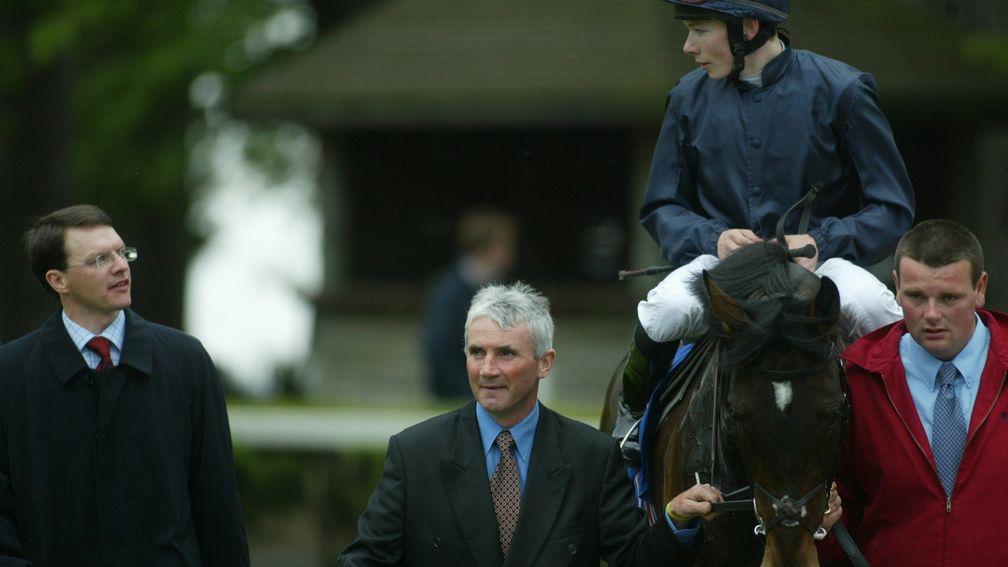
But a fortnight before the Derby O'Brien reported that Yeats had "tweaked a muscle".
He recalls: "He was tight after a bit of work and we gave him a few easy days. It didn't seem much, but he didn't improve and we called in Liz Kent, a brilliant equine physiotherapist. She did a lot of work with him and we were hopeful. But in the end we had to take him out of the Derby."
The problem was diagnosed as muscle stiffness between hip and backbone on the near-hind side.
O'Brien says: "We allowed him plenty of time to recover. We could maybe have got him back for the autumn, but decided not to rush him. We were still confident he was going to make a top-class middle-distance horse."
Spencer's tenure at Ballydoyle was brief. New stable jockey Kieren Fallon was aboard when Yeats reappeared at the Curragh in May 2005. He had been off for just a week short of a year. Although sent off at odds-on, there was no great surprise when he failed to cope with the race-fit Cairdeas, a Weld-trained colt in receipt of 7lb.
A month later, visiting Epsom 12 months behind schedule, Yeats set his redemption firmly in train in the Coronation Cup. He got an astute ride from Fallon, who dictated a modest gallop before kicking clear into the straight and winning by an unchallenged two and a half lengths from Jockey Club Stakes winner Alkaased.
It now seemed that Yeats, the first Irish-trained winner of the Coronation Cup since Roberto in 1973, was destined to fulfil his potential as a top-flight mile-and-a-half performer. Harsh reality reared its head only just over three weeks later when he trailed in ninth of 11 finishers behind Alkaased in the Grand Prix de Saint-Cloud.
O'Brien says: "We were still learning about him at four. Kieren was brilliant in the way he controlled the race from the front in the Coronation Cup, but the longer his career went on we started to see that his great ability was in running consistent fractions over longer distances."
Retirement 'could have happened'
After an interval of almost three months, O'Brien sent Yeats beyond a mile and a half for the first time in the Irish St Leger, a race opened to older horses in 1982, after which its roll of honour was embellished by multiple winners such as Vintage Crop, Oscar Schindler, Kayf Tara and, most of of all, Vinnie Roe.
In 2005 Vinnie Roe was bidding to win the race for the fifth time in a row. It was a testament to an enduring faith in Yeats that the pair were sent off 9-4 joint-favourites in a field of nine. Neither horse proved equal to the challenge, with Vinnie Roe beaten a length in third and Yeats another half a length away in fourth.
An honest effort, but hardly one to encourage hopes that Yeats would become a champion stayer, beaten by three horses with a combined age of 23; the winner was Collier Hill, a one-time 58-rated handicapper whose evolving Pattern career had been shaped in Stockholm and Cologne, and runner-up The Whistling Teal was a heavily raced gelding making his first Group 1 appearance at the age of nine.
In October Yeats was sent to Canada for the Pattison International at Woodbine, where his sixth placing behind the ex-Irish Relaxed Gesture, whom he had beaten in the Derrinstown the previous season, seemingly underlined his limitations.
O'Brien admits retirement could have been on the agenda at this point.
"I think it could have happened," he says. "After Epsom his season fell apart a bit, and obviously people were beginning to have doubts. But we had never had a Cup horse and were starting to see that was what he was. As I've said, the owners enjoyed having him and seeing him race, and they wanted to give him every chance."
If Yeats had retired at four, Coolmore's advertising department would still have had plenty of scope. Unbeaten at two and three, ante-post favourite for the Derby, prevented from running by minor injury, brilliant winner of the Coronation Cup at four. Moreover, he was out of a Top Ville mare, thus bred along the same lines as Montjeu, whose career as a sire had got off to a spectacular start thanks to the 2005 Classic-winning exploits of Motivator, Hurricane Run and Scorpion.
But with 2005 Gold Cup winner Westerner taking up stallion duties for Coolmore, Yeats returned to training and was sent to Ascot for his first Gold Cup bid without a prep run. He faced 11 rivals, including the 2005 runner-up Distinction and the Prix du Cadran winner Reefscape. Fallon rode him as if stamina was not in any doubt, and he was soon in command after being sent to the front two furlongs out, beating Reefscape by four lengths.
O'Brien says: "I've always said that his lung capacity and heart capacity were greater than any horse we've had. Once he started going over staying distances, that's what made him such an amazing horse."
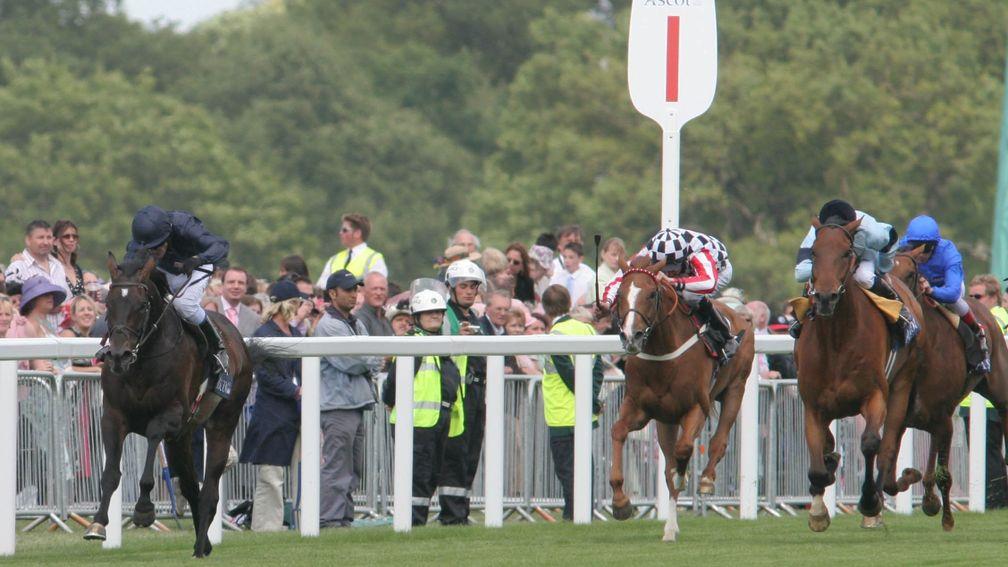
Yeats advanced his reputation with a magnificent performance in the 2006 Goodwood Cup, setting a new course record in trouncing the former French-trained Geordieland by five lengths.
Kinane, riding him for the first time since his maiden win, was uncharacteristically extravagant in his praise, labelling him "the best stayer I've ever ridden". An effervescent performance conjured up comparisons with great stayers such as Le Moss and Ardross, who had also won the Gold Cup and the Goodwood Cup in the same year.
Yeats now seemed unassailable in the staying division and was sent off the 2-7 favourite to give O'Brien a first Irish St Leger win. However, this time Kinane, riding Kastoria for John Oxx, was the architect of his downfall.
There was a "yes, no, maybe" approach as to whether Yeats would contest the 2006 Melbourne Cup. Eventually he was given the go-ahead to carry 9st 4lb in the famous race, previously conquered by Weld alone of northern-hemisphere trainers. He started 11-2 second favourite but could finish only seventh behind the Japanese-trained Delta Blues.
O'Brien says. "He wasn't suited by the gallop they often go in a Melbourne Cup. Quick, slow, and quick again. He was always best with a consistent pace."
Back on home territory, Yeats embarked on the most productive spell of his career with a routine dismissal of inferior opposition in the Vintage Crop Stakes at Navan in April 2007. Over the course of the next two seasons he won eight of his ten races, the only blots on his record occurring in successive attempts in the Prix du Cadran.
In his first defence of the Gold Cup he was opposed by established stayers including the Prix du Cadran and Yorkshire Cup winner Sergeant Cecil and the Prix Royal-Oak winner Montare, as well as Geordieland.
The pace was less demanding than ideal for the 8-13 favourite but Fallon eased him into the lead around two furlongs out and he wasn't seriously pressed by the staying-on Geordieland. O'Brien reported he was 12kg heavier than the year before.
The trainer's remarks about him getting quicker with age raised an intriguing possibility that he might drop back in trip for the Arc, in a manner reminiscent of Ardross, second to Akiyda in the Longchamp showpiece a quarter of a century earlier.
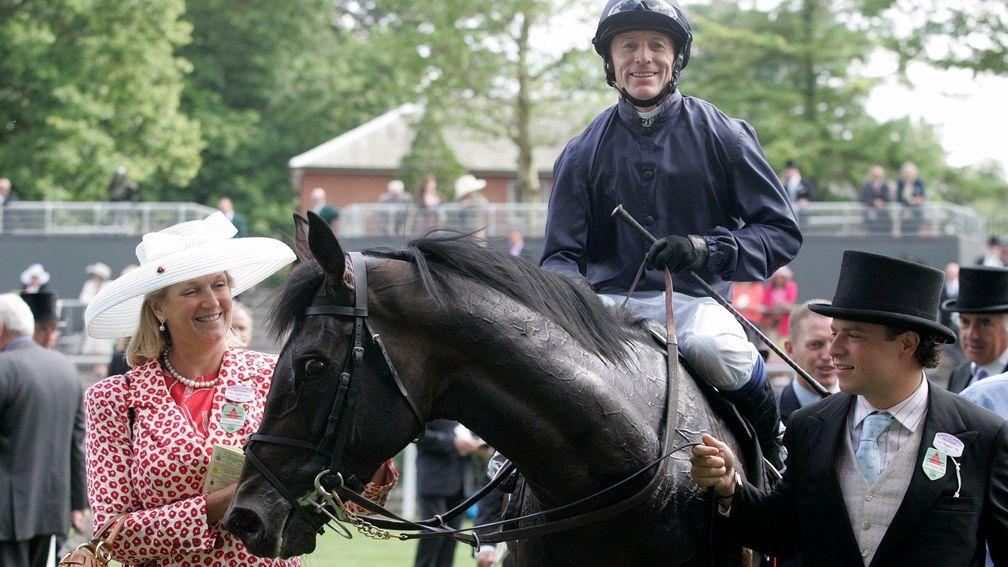
However, once Ballydoyle's 2006 Irish Derby winner Dylan Thomas had added the Prix Ganay, the King George and a second Irish Champion Stakes to his laurels he was a much more natural fit for Paris. Yeats headed instead for the Curragh, where he won the Irish St Leger at his third attempt, beating stablemate Scorpion.
O'Brien says: "He had won two Gold Cups, but it was definitely a relief to win an Irish St Leger after what had happened the previous two years. And Scorpion was a very good horse who had won that year's Coronation Cup."
Prefaced again by victory in the Vintage Crop, Yeats returned to Ascot for a third Gold Cup, ridden for the first time by Johnny Murtagh, who had replaced Fallon as stable jockey.
His rivals included the Andre Fabre-trained Coastal Path, an unbeaten winner of six races, the previous season's Goodwood Cup and Prix Royal-Oak winner Allegretto, as well as Sagara, who had finished third to Dylan Thomas in the Arc. However, once again, it was the ever-reliable Geordieland, a deserving winner of the Yorkshire Cup the previous month, who chased him home as he joined the great Sagaro as a three-time winner.
At the end of July Yeats recorded his 13th career win and took his earnings past the £1 million mark with a second Goodwood Cup triumph, giving a brilliant galloping performance.
O'Brien says: "Obviously Ascot is the course that everyone associated him with, but he was brilliant around Epsom in the Coronation Cup, and his two Goodwood Cups were a wonderful sight. Michael was unbelievably impressed with the way he won the first one, and it was the same with Johnny the second time."
Following an unplaced run in the Prix du Cadran, Yeats finally ended the French hoodoo by landing the Prix Royal-Oak from Allegretto.
Yeats began his 2009 campaign inauspiciously, bogged down in soft ground at Navan and reported afterwards to be blowing hard.
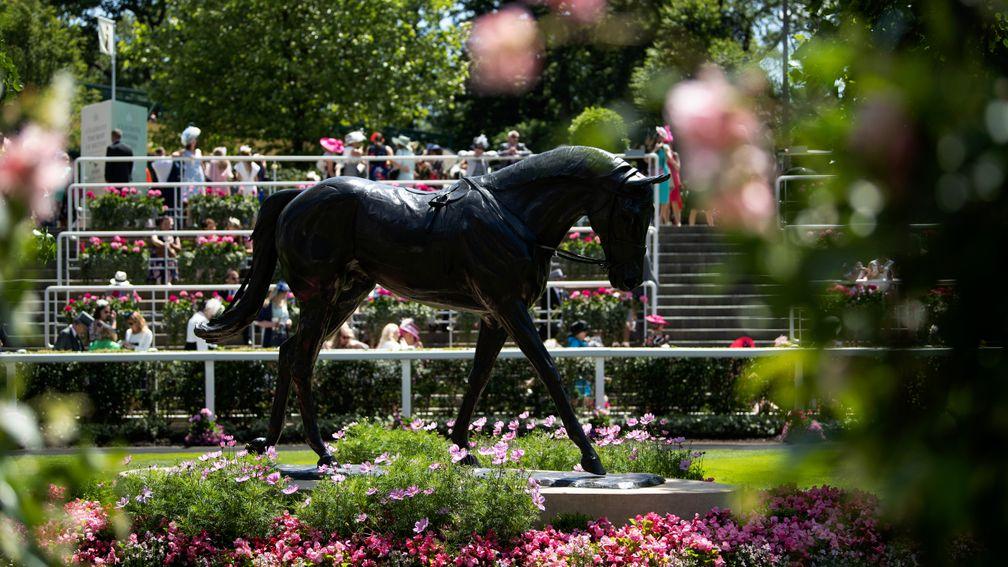
O'Brien now had just 53 days to prepare him for his date with destiny, aiming to become the first four-time winner in the Gold Cup, which had been inaugurated in 1807, and the first eight-year-old winner since Merman in 1900. And if that was not enough past history to contend with, O'Brien also reflected on his own ill-fated bid to win a fourth Champion Hurdle with Istabraq seven years earlier.
Geordieland was again in opposition, in good form following his defeat of the promising Patkai in the Henry II Stakes, but back on fast ground Yeats was triumphantly restored to form. Stepping up the tempo after Murtagh had sent him to the front three furlongs out, he kept up the gallop as Patkai threatened to close and won by three and a half lengths, with a 15-length gap to Geordieland in third.
Majestic as ever, Yeats returned to a rapturous reception. "The greatest, like Muhammad Ali, the greatest," exclaimed Murtagh.
O'Brien remembers an overwhelming sense of relief.
"On the day the pressure was on Johnny more than on myself, but I knew how disappointing it would have been if he had been beaten, for the owners and for the public who had really taken him to their hearts," he says.
"Everyone knew he had made racing history. That was a great thrill for the Magniers and the Nagles because that was the reason they had kept him going year after year.
"Four Gold Cups, an unbelievable horse."
The Great Stayers series is exclusive to Members' Club Ultimate subscribers. Read more articles in the series here:
Double Trigger: 'I've trained a lot of winners – but that's the race I've watched back the most'
Le Moss and Ardross: 'He was a cantankerous bugger. How Henry Cecil trained him, I'll never know'
Persian Punch: 'I knew he wouldn't let me down' – the wonderful warrior who ran his heart out

Over 50% off Racing Post Members' Club!Members' Club is the only subscription racing fans and punters need in order to stay informed and make smarter betting decisions. Features include early access to the Racing Post digital newspaper, exclusive news and interviews, premium tips and form study tools to assist with betting. Select 'Get Ultimate Monthly' and enter code TRYME to get your first month for just £14.99* – that's better than half price!
If you decide that Members' Club is not for you, then you can cancel at anytime by contacting us.
*Members' Club Ultimate Monthly first month will be charged at £14.99, renews at full price thereafter
Published on 15 October 2021inFeatures
Last updated 17:10, 14 October 2021
- Government says it is working 'at pace' to have white paper measures in force by the summer
- 'The only thing you can do is lie fallow and regroup' - Meades to return with scaled-back operation following blank period
- The Gambling Commission has launched its new corporate strategy - but what are the key points?
- 'It was tragic it happened to Paddy but it was a good thing for the jockeys who followed - good came out of bad'
- Acquisitions, exits and retail resilience - what we learned from Flutter and 888's results
- Government says it is working 'at pace' to have white paper measures in force by the summer
- 'The only thing you can do is lie fallow and regroup' - Meades to return with scaled-back operation following blank period
- The Gambling Commission has launched its new corporate strategy - but what are the key points?
- 'It was tragic it happened to Paddy but it was a good thing for the jockeys who followed - good came out of bad'
- Acquisitions, exits and retail resilience - what we learned from Flutter and 888's results